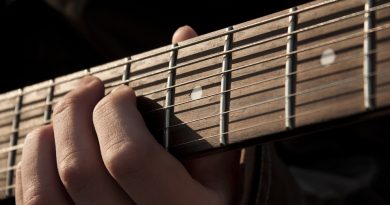Guitar 101: A Beginner’s Guide to Playing Clean and Distorted
Guitar 101: A Beginner’s Guide to Playing Clean and Distorted
Whether you’re a complete beginner or someone who has dabbled in playing the guitar, mastering the basics of clean and distorted playing is essential for any aspiring guitarist. In this beginner’s guide, we will cover the fundamentals of playing both clean and distorted guitar, as well as some tips and tricks to help you improve your skills and sound.
Understanding Clean Playing
Clean playing refers to playing the guitar without any distortion or effects, producing a clear and crisp sound. It is important to master clean playing before moving on to playing with distortion, as it helps develop your technique and control over the instrument.
1. Proper Technique
One of the most important aspects of clean playing is maintaining proper technique. This includes holding the guitar properly, using the correct finger positioning on the fretboard, and strumming or picking with precision. Make sure to practice playing scales, chords, and arpeggios slowly and accurately to build muscle memory and improve your overall technique.
2. Use the Right Gear
To achieve a clean sound, it is important to use the right gear. This includes using a good quality guitar with a clean tone, a clean amplifier, and high-quality cables. Make sure to also keep your guitar well-tuned and maintain your equipment regularly to ensure optimal sound quality.
3. Practice Rhythm
Rhythm is key when it comes to clean playing. Practice strumming patterns and chord progressions at different tempos to improve your sense of timing. Start slow and gradually increase the speed as you become more comfortable with the patterns.
4. Experiment with Dynamics
Dynamics refer to the variation in volume and intensity of your playing. Experiment with playing softly and loudly to add depth and emotion to your music. Practice controlling the dynamics of your playing by gradually increasing and decreasing the volume while playing different exercises and songs.
Playing with Distortion
Distorted playing involves adding a gritty, overdriven sound to your guitar tone, giving it a more aggressive and powerful sound. While clean playing focuses on precision and clarity, playing with distortion allows you to unleash your inner rock star and add intensity to your music.
1. Choose the Right Distortion Pedal
To achieve a distorted sound, you will need a distortion pedal. There are many different types of distortion pedals available, each offering a unique sound. Experiment with different pedals to find one that suits your playing style and preferences.
2. Adjust Your Settings
Once you have chosen a distortion pedal, it is important to adjust the settings to achieve the desired sound. Experiment with the gain, tone, and volume controls to find the perfect balance between clarity and aggression. Start with moderate settings and make adjustments as needed to achieve the sound you want.
3. Practice Power Chords
Power chords are a staple of distorted guitar playing, commonly used in rock and metal music. Practice playing power chords by placing your index finger on the root note and your ring finger on the octave above. Use palm muting and alternate picking to add texture and dynamics to your power chord playing.
4. Experiment with Lead Lines
Playing lead lines with distortion can add flair and excitement to your playing. Practice playing scales, arpeggios, and licks with distortion to improve your soloing skills. Experiment with bending, vibrato, and sliding techniques to add expression and character to your lead lines.
Tips for Improving Your Playing
1. Practice Regularly
Consistent practice is key to improving your guitar playing skills. Set aside time each day to practice and focus on specific techniques and exercises to help you progress.
2. Learn from Others
Take inspiration from your favorite guitarists and songs by studying their playing styles and techniques. Watch video tutorials, attend workshops, and learn from experienced guitarists to improve your own skills.
3. Record Yourself
Recording yourself playing can help you identify areas for improvement and track your progress over time. Listen to your recordings and make notes on areas that need work, such as timing, tone, or technique.
4. Have Fun
Playing the guitar should be an enjoyable and rewarding experience. Experiment with different techniques, styles, and genres to find what excites you and motivates you to continue practicing and improving.
In conclusion, mastering the basics of clean and distorted playing is essential for any aspiring guitarist. By focusing on proper technique, using the right gear, and practicing regularly, you can improve your skills and sound on the guitar. Experiment with different styles and techniques to find your unique voice and have fun exploring the possibilities of the instrument. With dedication and practice, you can become a proficient guitarist and achieve your musical goals.






